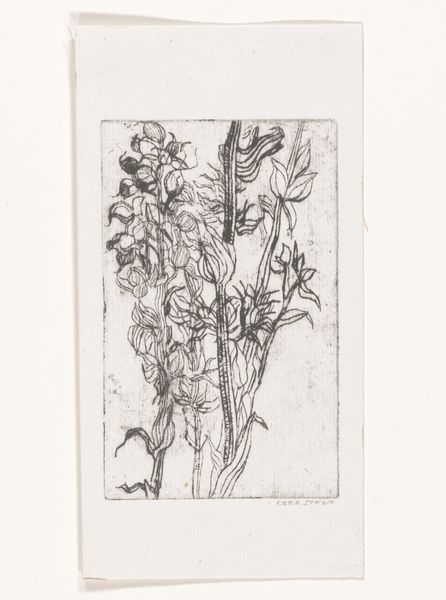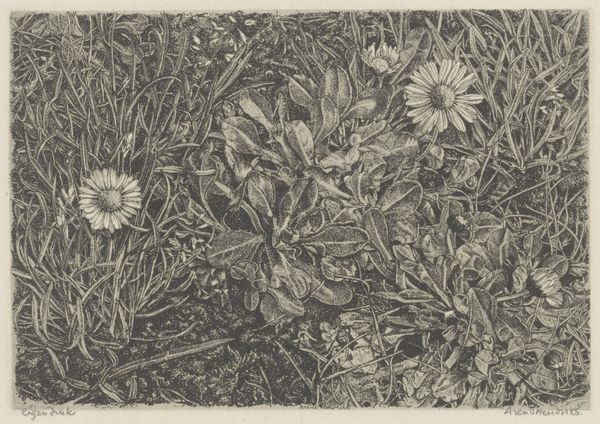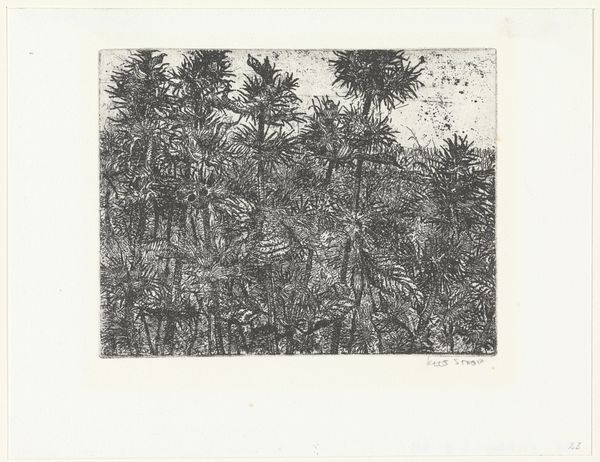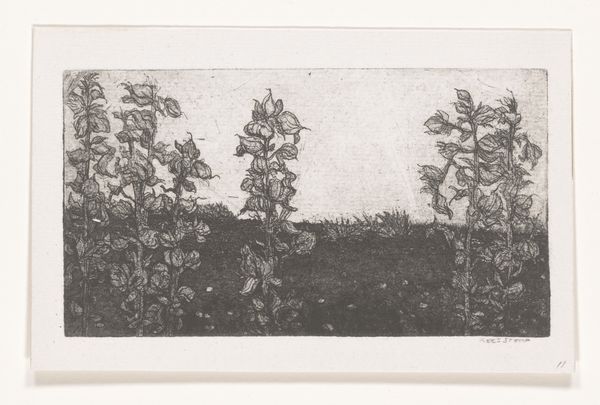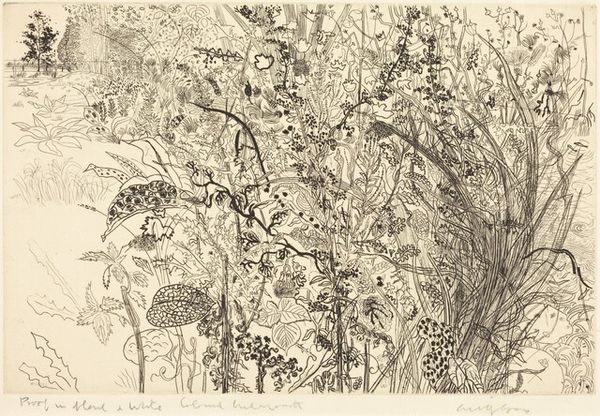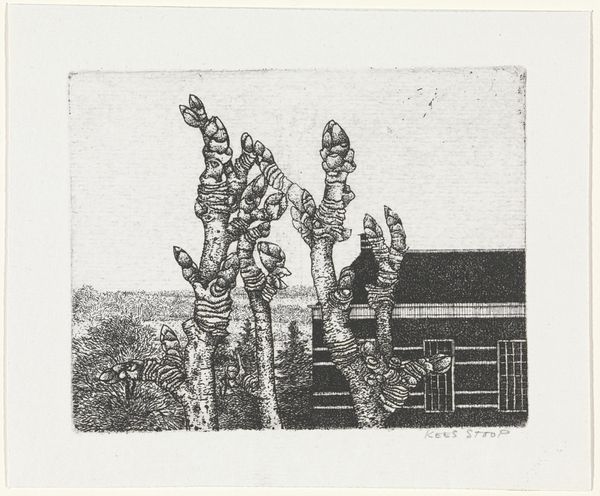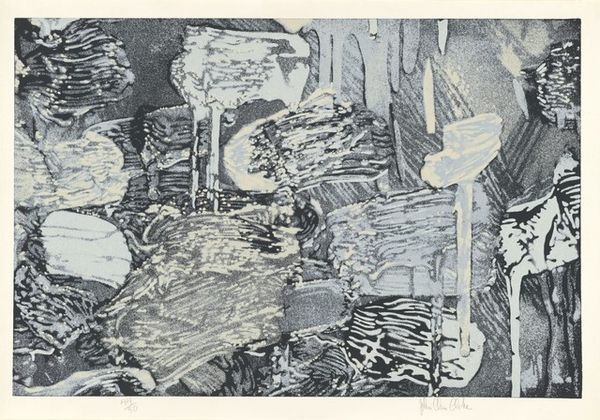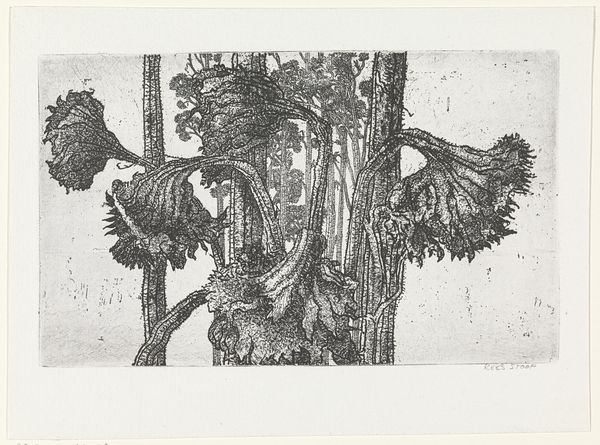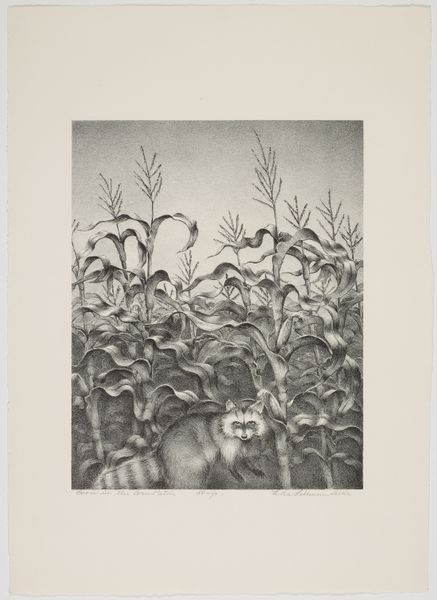
print, linocut
# print
#
linocut
#
landscape
#
linocut print
#
plant
Dimensions: height 175 mm, width 250 mm, height 148 mm, width 165 mm
Copyright: Rijks Museum: Open Domain
Curator: This compelling print is "Begroeiing voor een muur," which translates to "Vegetation for a Wall," made by Kees Stoop sometime between 1944 and 1990. It’s a linocut now residing here at the Rijksmuseum. Editor: Stark. The sharp contrast immediately catches my eye. The thick, dark strokes create such a dense, almost claustrophobic feeling. There's a definite sense of compression between the flat, textured plane of what I assume is the "wall" and the sky beyond. Curator: I'm intrigued by the period he made this, stretching from World War II to the end of the Cold War era. Stoop, working within that time, may have intended the "wall" as a symbol of barriers—political, social, or even psychological. Look closely at the almost aggressive verticality of the stems, pushing against this perceived barrier. Editor: Yes, the composition reinforces that sense of division. Notice how the upper band, the "wall," is a solid field of near-black, set against the relatively brighter plane above with its stark white and darker foliage, divided into the wall and that which lies beyond. It draws the eye upward. Curator: Linocut as a medium lends itself well to this interpretation. It allows for strong, graphic imagery, stripped of nuance. It reinforces this idea of stark divisions—black and white, us and them—prevalent during the global conflicts of his time. The lack of color adds to that raw intensity. Editor: Technically, the details in the vegetation are rendered with incredible precision despite the relative coarseness of the medium. Stoop utilizes negative space to define individual leaves and seedpods, adding a surprising amount of detail to the plants pushing upwards. Curator: Exactly! Perhaps he uses the resilient persistence of plantlife as a metaphor for the indomitable spirit of those who, at that time, lived under oppression or constant surveillance. Editor: Considering its inherent formal qualities—its contrast, texture, and deliberate composition—I appreciate how "Vegetation for a Wall" creates this emotional tension, prompting consideration of the limitations of this constructed visual experience within the chosen medium. Curator: Agreed. Considering this work in relation to that particular period in Dutch history definitely allows for a powerful understanding of its intent, adding resonance to Stoop’s vision.
Comments
No comments
Be the first to comment and join the conversation on the ultimate creative platform.
